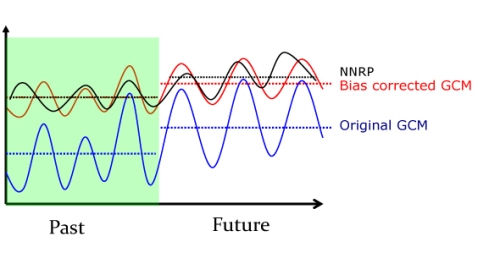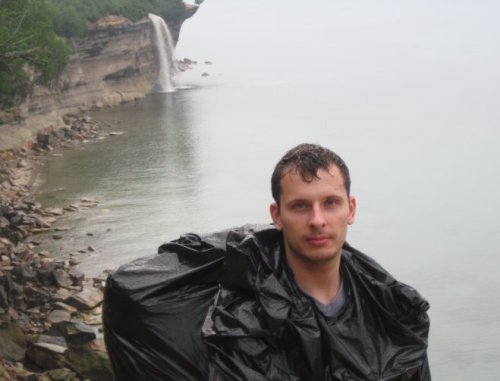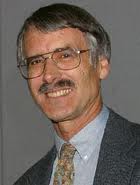With his permission, I have reproduced the relevant part of our e-mail exchange below [my replies are in italics]
Date: Fri, 2 Nov 2012 16:43:22 -0400
From: James I Wynn <jwynn@andrew.cmu.edu>
To: ‘Roger A Pielke Sr’ <pielkesr@ciresmail.colorado.edu>
Subject: RE: Interview Request for Citizen Science Book
Roger,
Here are my questions. I appreciate your taking the time to answer them.
All the Best,
James
1. To what extent and in what ways were you involved in developing the Surface Stations project? What persuaded you to get involved? Please provide some detail about your involvement and motivations.
The first part of this is question, of course, is more appropriate for Anthony Watts to answer. With respect to my involvement, I have been 100% in support of what Anthony has successfully completed. My interest in this subject was reported, for example, in our papers
Hanamean, J.R. Jr., R.A. Pielke Sr., C.L. Castro, D.S. Ojima, B.C. Reed, and Z. Gao, 2003: Vegetation impacts on maximum and minimum temperatures in northeast Colorado. Meteorological Applications, 10, 203-215. https://pielkeclimatesci.files.wordpress.com/2009/10/r-254.pdf
Davey, C.A., and R.A. Pielke Sr., 2005: Microclimate exposures of surface-based weather stations – implications for the assessment of long-term temperature trends. Bull. Amer. Meteor. Soc., Vol. 86, No. 4, 497–504. https://pielkeclimatesci.files.wordpress.com/2009/10/r-274.pdf
It took several years for this later paper to get through the review process since there was resistance to publish such a critique in the quality of station siting.
The resistance of NCDC, under Tom Karl, to questioning of siting quality is clearly illustrated in the attempt by Tom Karl, as Lead on the CCSP 1.1 report, to prevent the assessment of this siting issue as well as other issues on the spatial representativeness and accuracy of those data. This issue is summarized in my Public Comment
Pielke Sr., Roger A., 2005: Public Comment on CCSP Report “Temperature Trends in the Lower Atmosphere: Steps for Understanding and Reconciling Differences”. 88 pp including appendices. https://pielkeclimatesci.files.wordpress.com/2009/09/nr-143.pdf
Other papers followed which built on examining the issue of the value of land surface temperatures in diagnosing multi-decadal surace temperature changes. These include
Pielke Sr., R.A., T. Stohlgren, W. Parton, J. Moeny, N. Doesken, L. Schell, and K. Redmond, 2000: Spatial representativeness of temperature measurements from a single site. Bull. Amer. Meteor. Soc., 81, 826-830. https://pielkeclimatesci.files.wordpress.com/2009/10/r-221.pdf
Pielke Sr., R.A., T. Stohlgren, L. Schell, W. Parton, N. Doesken, K. Redmond, J. Moeny, T. McKee, and T.G.F. Kittel, 2002: Problems in evaluating regional and local trends in temperature: An example from eastern Colorado, USA. Int. J. Climatol., 22, 421-434. https://pielkeclimatesci.files.wordpress.com/2009/10/r-234.pdf
Pielke Sr., R.A. J. Nielsen-Gammon, C. Davey, J. Angel, O. Bliss, N. Doesken, M. Cai., S. Fall, D. Niyogi, K. Gallo, R. Hale, K.G. Hubbard, X. Lin, H. Li, and S. Raman, 2007: Documentation of uncertainties and biases associated with surface temperature measurement sites for climate change assessment. Bull. Amer. Meteor. Soc., 88:6, 913-928. https://pielkeclimatesci.files.wordpress.com/2009/10/r-318.pdf
Pielke Sr., R.A., C. Davey, D. Niyogi, S. Fall, J. Steinweg-Woods, K. Hubbard, X. Lin, M. Cai, Y.-K. Lim, H. Li, J. Nielsen-Gammon, K. Gallo, R. Hale, R. Mahmood, S. Foster, R.T. McNider, and P. Blanken, 2007: Unresolved issues with the assessment of multi-decadal global land surface temperature trends. J. Geophys. Res., 112, D24S08, doi:10.1029/2006JD008229. https://pielkeclimatesci.files.wordpress.com/2009/10/r-321.pdf
Pielke Sr., R.A., C. Davey, D. Niyogi, S. Fall, J. Steinweg-Woods, K. Hubbard, X. Lin, M. Cai, Y.-K. Lim, H. Li, J. Nielsen-Gammon, K. Gallo, R. Hale, R. Mahmood, S. Foster, R.T. McNider, and P. Blanken, 2009: Reply to comment by David E. Parker, Phil Jones, Thomas C. Peterson, and John Kennedy on “Unresolved issues with the assessment of multi-decadal global land surface temperature trends. J. Geophys. Res., 114, D05105, doi:10.1029/2008JD010938. https://pielkeclimatesci.files.wordpress.com/2009/10/r-321a.pdf
Jamiyansharav, K., D. Ojima, and R.A. Pielke Sr., 2006: Exposure characteristics of the Mongolian weather stations. Atmospheric Science Paper No. 779, Colorado State University, Fort Collins, CO 80523, 75 pp. https://pielkeclimatesci.files.wordpress.com/2009/09/nr-145.pdf
McNider, R.T., G.J. Steeneveld, B. Holtslag, R. Pielke Sr, S. Mackaro, A. Pour Biazar, J.T. Walters, U.S. Nair, and J.R. Christy, 2012: Response and sensitivity of the nocturnal boundary layer over land to added longwave radiative forcing. J. Geophys. Res., doi:10.1029/2012JD017578 https://pielkeclimatesci.files.wordpress.com/2012/07/r-371.pdf
Fall, S., A. Watts, J. Nielsen-Gammon, E. Jones, D. Niyogi, J. Christy, and R.A. Pielke Sr., 2011: Analysis of the impacts of station exposure on the U.S. Historical Climatology Network temperatures and temperature trends. J. Geophys. Res., 116, D14120, doi:10.1029/2010JD015146.Copyright (2011) American Geophysical Union. https://pielkeclimatesci.files.wordpress.com/2011/07/r-367.pdf
This last paper is the first formal peer-reviewed paper resulting from the effective research collaboration with Anthony.
2. Were you involved in the writing or editing of Watts’s report Is the U.S. Surface Temperature Record Reliable? (2009)? If you were, please provide some detail about your contributions to the document.
I did not directly work with Anthony on his excellent report
3. To what degree, in your estimation, did Watt’s report offer an appropriate (fair/balanced) treatment of Surface Stations findings? What sorts of criticisms did it provoke in the scientific community? Please include only ones that might be considered reasonable.
Anthony’s work has had a major impact on NCDC. Not only was he invited to present a lecture at NCDC, but his work has been used by NCDC both in at least one of their published papers, and in removing poorly sited locations from their sata set. Anthony involved expertise in the climate community, including John Neilson-Gammon at Texas A&M who is Texas State Climatologist. I recommend you ask Anthony about this, including how NCDC inappropriately, in our view, used Anthony’s data.
In the BEST project, Richard Muller used Anthony’s siting data in this analysis. While I disagree with the conclusions claimed by Muller (he has grossly misinterpreted and overstated the BEST findings as I have documented in my weblog), the BEST use of Anthony’s data illustrates that the surface station project led by Anthony is a robust scientific endeavor.
4. What challenges/resistance did you face personally/professionally because of your collaboration with Watts? What has motivated you to work with skeptical members of the public despite these challenges?
I disagree with the term “skeptics” as used in the climate discussion as I view it as pejorative.
I work with colleagues of all perspectives. Anthony Watts clearly has established himself as a respect scientific colleague.
There has been push back, however, because I have worked with those who do not accept the IPCC conclusions as scientifically complete. This has affected my funding, for example. However, it has not altered my ability to publish in the peer reviewed literature as many of my colleagues share my disagreements with significant aspects of the CCSP and IPCC reports. This shared view can be seen in the multi-authorship list of my publications on this subject. Another example directly related to the surface temperature siting issue is the paper
Mahmood, R., R.A. Pielke Sr., K.G. Hubbard, D. Niyogi, G. Bonan, P. Lawrence, B. Baker, R. McNider, C. McAlpine, A. Etter, S. Gameda, B. Qian, A. Carleton, A. Beltran-Przekurat, T. Chase, A.I. Quintanar, J.O. Adegoke, S. Vezhapparambu, G. Conner, S. Asefi, E. Sertel, D.R. Legates, Y. Wu, R. Hale, O.W. Frauenfeld, A. Watts, M. Shepherd, C. Mitra, V.G. Anantharaj, S. Fall,R. Lund, A. Nordfelt, P. Blanken, J. Du, H.-I. Chang, R. Leeper, U.S. Nair, S. Dobler, R. Deo, and J. Syktus, 2010: Impacts of land use land cover change on climate and future research priorities. Bull. Amer. Meteor. Soc., 91, 37–46, DOI: 10.1175/2009BAMS2769.1 https://pielkeclimatesci.files.wordpress.com/2010/02/r-323.pdf
I also recommend these weblog posts to provide examples of the difficulties and biases that are introduced when one deviates from the IPCC perspective
https://pielkeclimatesci.wordpress.com/2010/06/16/my-comments-on-questionnaire-on-ipcc-processes-and-procedures/
https://pielkeclimatesci.wordpress.com/2009/11/26/e-mail-documentation-of-the-successful-attempt-by-thomas-karl-director-of-the-u-s-national-climate-data-center-to-suppress-biases-and-uncertainties-in-the-assessment-surface-temperature-trends/
5. What role, in your opinion, should scientist play in engaging the public on issues of public controversy? To what extent do you believe your opinion is shared by other members/organizations in your field?
In answer to your second question, as one example, I solicited colleagues within the AGU who are Fellows to write an article that provides a more scientifically robust view than presented by the IPCC. This is just one example that illustrates that my views are shared by quite a few climate scientists. This article is
Pielke Sr., R., K. Beven, G. Brasseur, J. Calvert, M. Chahine, R. Dickerson, D. Entekhabi, E. Foufoula-Georgiou, H. Gupta, V. Gupta, W. Krajewski, E. Philip Krider, W. K.M. Lau, J. McDonnell, W. Rossow, J. Schaake, J. Smith, S. Sorooshian, and E. Wood, 2009: Climate change: The need to consider human forcings besides greenhouse gases. Eos, Vol. 90, No. 45, 10 November 2009, 413. Copyright (2009) American Geophysical Union. https://pielkeclimatesci.files.wordpress.com/2009/12/r-354.pdf
Other examples of the wider acceptance of my views are in the papers
McAlpine, C.A., W.F. Laurance, J.G. Ryan, L. Seabrook, J.I. Syktus, A.E. Etter, P.M. Fearnside, P. Dargusch, and R.A. Pielke Sr. 2010: More than CO2: A broader picture for managing climate change and variability to avoid ecosystem collapse. Current Opinion in Environmental Sustainability, 2:334-336, DOI10.1016/j.cosust.2010.10.001. https://pielkeclimatesci.files.wordpress.com/2010/12/r-355.pdf
Pielke Sr., R.A., A. Pitman, D. Niyogi, R. Mahmood, C. McAlpine, F. Hossain, K. Goldewijk, U. Nair, R. Betts, S. Fall, M. Reichstein, P. Kabat, and N. de Noblet-Ducoudré, 2011: Land use/land cover changes and climate: Modeling analysis and observational evidence. WIREs Clim Change 2011, 2:828–850. doi: 10.1002/wcc.144. https://pielkeclimatesci.files.wordpress.com/2012/01/r-369.pdf
In terms of how to involve scientists in working with policymakers, I recommend my son’s books
The Honest Broker
http://sciencepolicy.colorado.edu/publications/special/honest_broker/index.html
and
The Climate Fix
http://theclimatefix.com/
6. If there are challenges/barriers to scientists’ engagement with the public, what sort of solutions, in your opinion, would improve current practices?
I recommend my son’s books which I have listed above.
I also have urged a reframing of the issue. This is summarized in our paper\
Pielke Sr., R.A., R. Wilby, D. Niyogi, F. Hossain, K. Dairuku, J. Adegoke, G. Kallos, T. Seastedt, and K. Suding, 2012: Dealing with complexity and extreme events using a bottom-up, resource-based vulnerability perspective. Extreme Events and Natural Hazards: The Complexity Perspective Geophysical Monograph Series 196 © 2012. American Geophysical Union. All Rights Reserved. 10.1029/2011GM001086 https://pielkeclimatesci.files.wordpress.com/2012/10/r-3651.pdf
where we concluded that
We discuss the adoption of a bottom-up, resource-based vulnerability approach in evaluating the effect of climate and other environmental and societal threats to societally critical resources. This vulnerability concept requires the determination of the major threats to local and regional water, food, energy, human health, and ecosystem function resources from extreme events including those from climate but also from other social and environmental issues. After these threats are identified for each resource, then the relative risks can be compared with other risks in order to adopt optimal preferred mitigation/adaptation strategies. This is a more inclusive way of assessing risks, including from climate variability and climate change, than using the outcome vulnerability approach adopted by the Intergovernmental Panel on Climate Change (IPCC). A contextual vulnerability assessment using the bottom-up, resource-based framework is a more inclusive approach for policy makers to adopt effective mitigation and adaptation methodologies to deal with the complexity of the spectrum of social and environmental extreme events that will occur in the coming decades as the range of threats are assessed, beyond just the focus on CO2 and a few other greenhouse gases as emphasized in the IPCC assessments.
This summary below is also how I have been framing the climate science issue
The natural Earth’s climate system is highly nonlinear in which forcings and response are not necessarily proportional; thus change is often episodic and abrupt, rather than slow and gradual. Climate has always changed over time. As Earth’s population has grown, however, human climate forcings have become significant on the local, regional and global scales. These human forcings include greenhouse gas emissions, aerosol emissions and deposition [e.g., black carbon (soot) and reactive nitrogen], and changes in land use and land cover. A number of these forcings are spatially heterogeneous and include the effect of aerosols on clouds and associated precipitation. Among their effects is their role in altering atmospheric and ocean circulation features away from what they would be in the natural climate system. The greenhouse emissions and aerosol emissions, in particular, have resulted in changes to the global average radiative forcings. Most, if not all, of these human influences on regional and global climate will continue to be of concern during the coming decades. Changes in the global radiative forcings (global warming or cooling) are a subset of climate change
James had a follow up request for clarification [again my replies are in italics]













